When it comes to food and cooking, we all face various conundrums. There are allergies, intolerances and avoidance of ingredients. Personally, having lived with Crohn’s disease since I was a child, I feel my whole life has been learning how to navigate food. This was the original precipice that made me start to learn how to cook.
If you spend enough time in the kitchen, adjusting seasoning comes easy. We all know how a pinch of salt can be the magic that pulls a recipe together. Salt in moderation will not be harmful to the average human. It is actually one of the necessary elements in our diets.
Naturally our bodies need and use sodium to conduct nerve impulses, maintain electrolyte balance and to help muscles contract and relax. It isn’t something most of us think of because salt is in a majority of the foods we eat and the average human’s body knows how to eliminate excess sodium.
But there are some of us who aren’t perfect machines. How do we compensate for a low sodium diet without sacrificing flavor? Is it possible? There are many ways to adjust your seasoning without adding that extra pinch of salt.
Pungent Power
Garlic is my favorite pungent punch in food. There is just something magical about this one ingredient which can be spicy when raw but sweet and nutty when roasted. When limiting salt, garlic can make a dull dish shine.
Ginger, wasabi, mustard, horseradish, peppers and onion are also great common choices. You don’t want to change the entire recipe flavor profile but with lower salt, you may want to increase quantities.
Be Zesty
The zest from lemons, limes, and oranges are other zippy options. Cooked vegetables with citrus zest come alive in your mouth and you won’t even miss the salt.
Obviously citrus juices and vinegars are other options that bring up the brightness without adding to sodium levels.
Dig Deep Into Your Cabinets Not Your Pockets
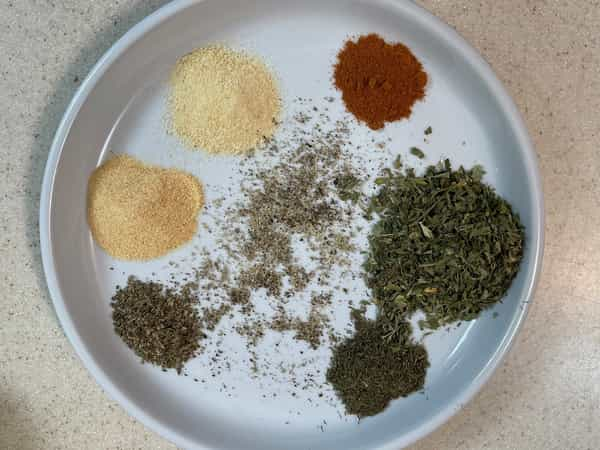 When dietary changes occur, a lot of us go out to find the magical products that fit our current needs. We all have cabinets or drawers filled with herbs and spices and that is all the magic we really need.
When dietary changes occur, a lot of us go out to find the magical products that fit our current needs. We all have cabinets or drawers filled with herbs and spices and that is all the magic we really need.
Use caution when adding premade spice mixes if you are avoiding sodium. So many of them add salt. There are low sodium options or salt alternatives but use your talents to create your own. It is much more fun and safer for your diet.
Things like cinnamon, turmeric, curry powders, fresh ground peppercorns, sage, tarragon and dill can all pick up where you left the salt out. Allow yourself some discovery. Without the added sodium, herbs and spices can offer a different depth of flavor especially if you grind them up yourself. (Did you read about the Finamill? There is still time to get it for someone you love... or yourself!)
Fat is Flavor
If salt is your kryptonite, hit up your healthy fats for flavor. An avocado, some nuts and good quality olive oil can amp up an area that may need a boost. Truffle oil is another fat that is rich and flavorful and makes your feel like you are missing nothing!
When your roast or sauté, you will still build the flavor in the pan without the addition of salt. One of the biggest mistakes I see when I watch people cook is not giving the pan a final good toss. So many of those juices that drip to the bottom of the pan can get reintroduced to the season the top.
Fresh Finale
There is nothing that compliments a dish than a handful of chopped herbs. Fine herbs like chives, basil, parsley (curly or Italian) and dill brings will bring out a fresh clean nuance to any dish.
The key is to not settle for a boring meal just because you need to limit or omit salt. Yes, food may taste different but new boundaries don’t need to be monotonous.
I’m including a recipe for seasoned oyster crackers that make a great gift for a loved one with a sodium dietary restriction. They are great on chili, soup or on a cheese board.
If you do have dietary boundaries, schedule yourself for a private virtual lesson from The Chopping Block (one-on-one). It is a great opportunity to brainstorm substitutions and options in your menus.
Herby Seasoned Oyster Crackers
Scroll down for a printable version of this recipe
Serves 6-8 as a garnish on soup or chili
Active time: 5 minutes
Cook time: 20 minutes
Total time: 25 minutes
1 Tablespoon dried parsley
1 1/2 teaspoon dried dill
1 teaspoon garlic powder
1 teaspoon onion powder
1/2 teaspoon dried basil
1/2 teaspoon paprika
Ground pepper
1 9-ounce bag of low sodium (or no sodium) Oyster Crackers (about 5 cups)
3 Tablespoons of melted butter
1. Preheat oven to 250 degrees F.
2. Line a baking sheet with a piece of parchment paper.
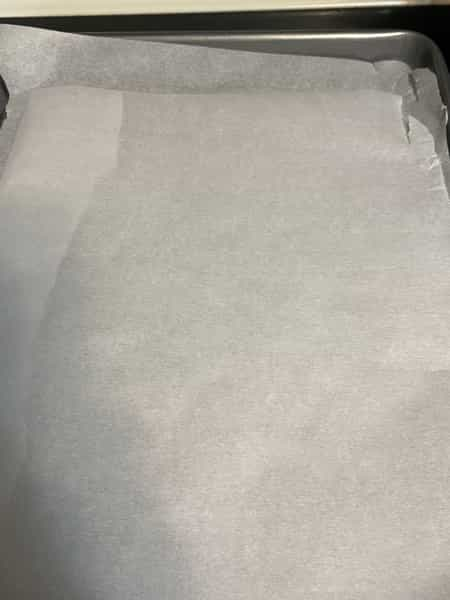 3. In a large bowl, add the crackers.
3. In a large bowl, add the crackers.
4. Drizzle in about 2 tablespoons of melted butter.
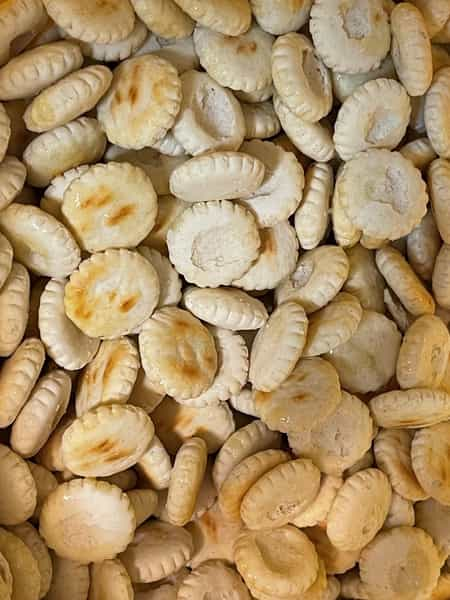 5. Gently stir to coat crackers. Drizzle remaining butter and herbs.
5. Gently stir to coat crackers. Drizzle remaining butter and herbs.
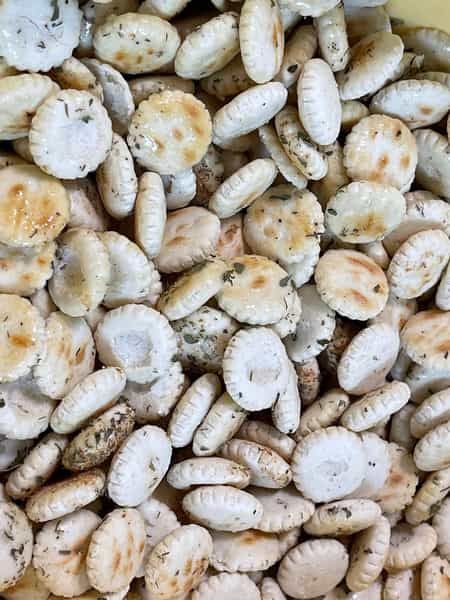 6. Pour out the crackers onto the prepared baking sheet. Bake 10 minutes and stir.
6. Pour out the crackers onto the prepared baking sheet. Bake 10 minutes and stir.
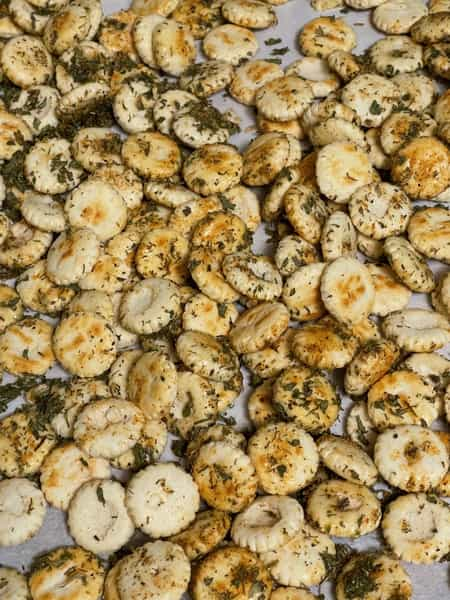 7. Bake another 10 minutes.
7. Bake another 10 minutes.
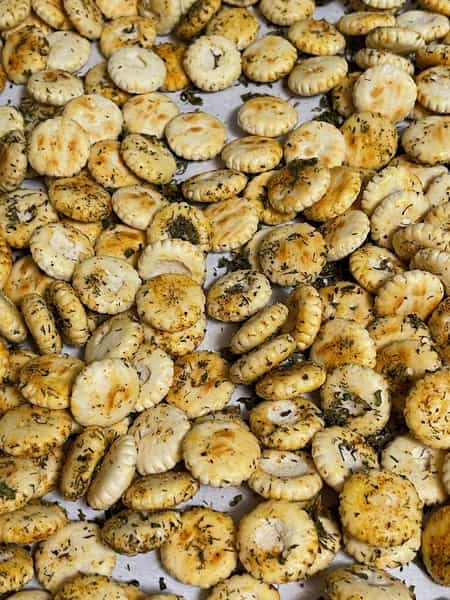 8. Allow to cool to room temperature and store in an airtight container.
8. Allow to cool to room temperature and store in an airtight container.
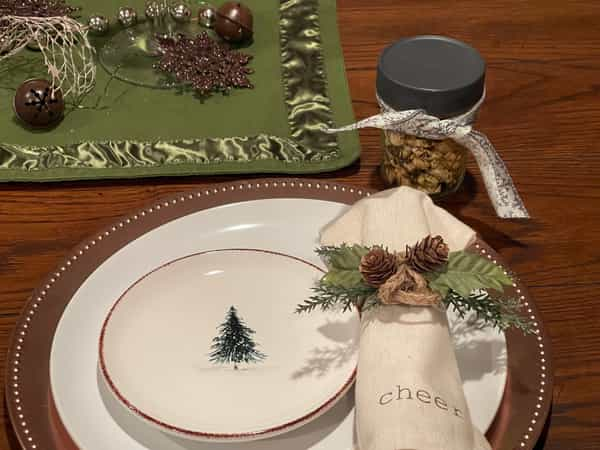 These also make cute host/hostess gifts. I like to put them in a Mason jar with the recipe attached.
These also make cute host/hostess gifts. I like to put them in a Mason jar with the recipe attached.
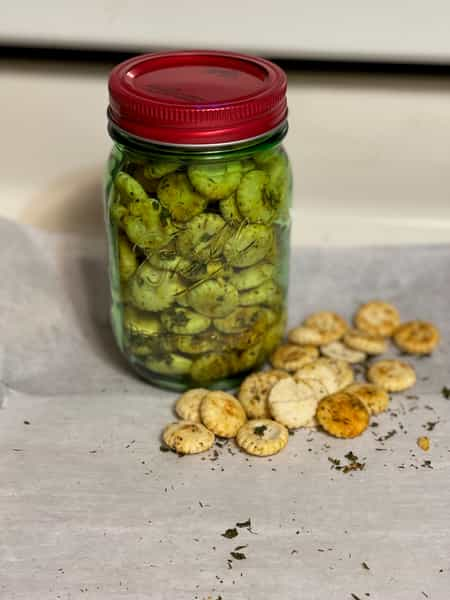
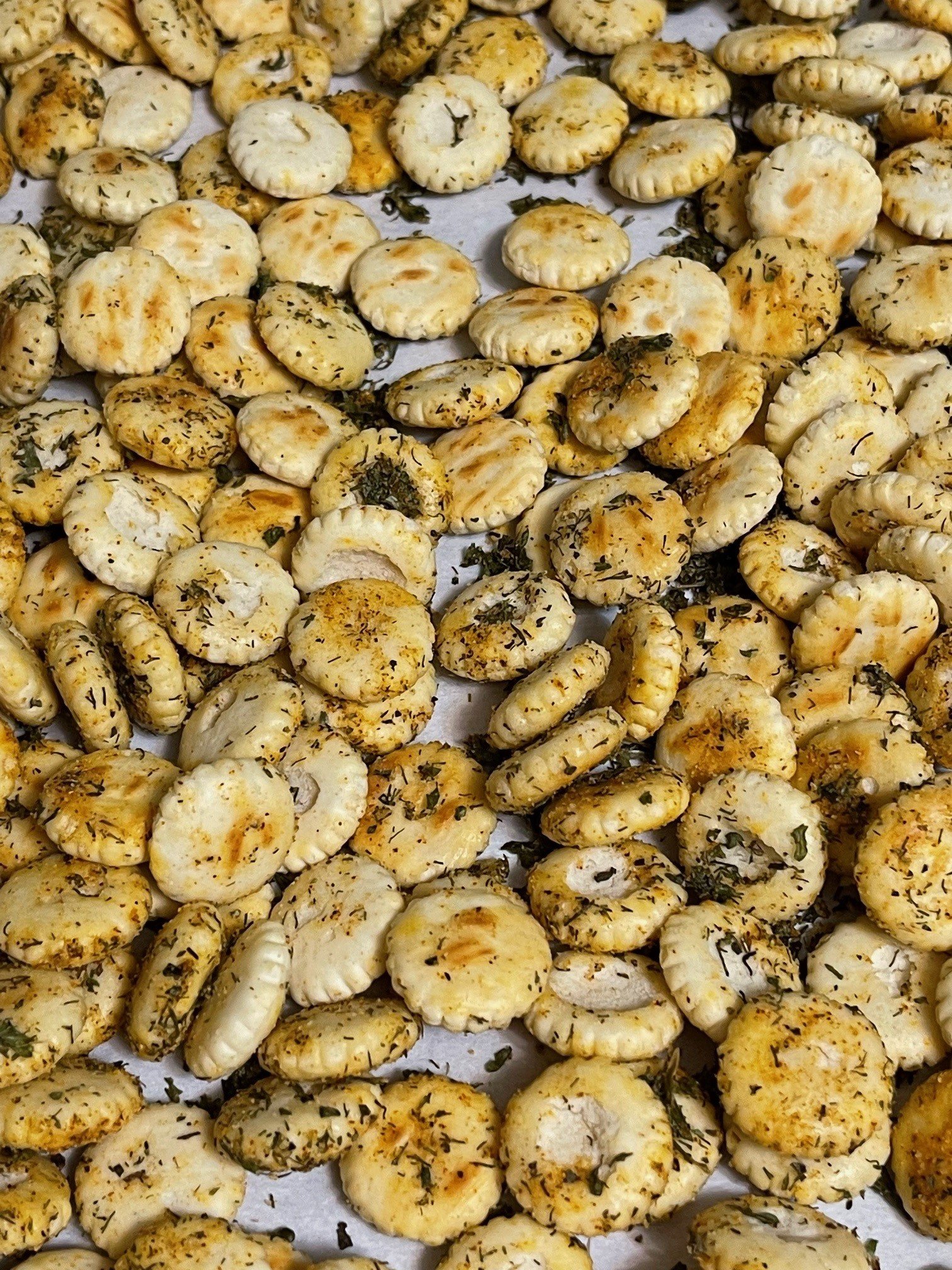
Herby Seasoned Oyster Crackers
Ingredients
- 1 Tablespoon dried parsley
- 1 1/2 teaspoon dried dill
- 1 teaspoon garlic powder
- 1 teaspoon onion powder
- 1/2 teaspoon dried basil
- 1/2 teaspoon paprika
- Ground pepper
- 1 9-ounce bag of low sodium (or no sodium) Oyster Crackers (about 5 cups)
- 3 Tablespoons of melted butter
Instructions
- Preheat oven to 250 degrees F.
- Line a baking sheet with a piece of parchment paper.
- In a large bowl, add the crackers.
- Drizzle in about 2 tablespoons of melted butter.
- Gently stir to coat crackers. Drizzle remaining butter and herbs.
- Pour out the crackers onto the prepared baking sheet. Bake 10 minutes and stir.
- Bake another 10 minutes.
- Allow to cool to room temperature and store in an airtight container.











